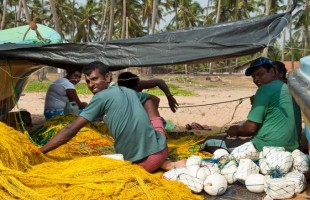Kurunegala is the capital of the North-Western Province (for a brief period centuries ago, it was also the national capital), situated 58 miles from Colombo. While there is not much of interest in Kurunegala itself, the town has a very pleasant artificial lake. The shadow of Elephant Rock dominates the town. In fact, several of the huge granite outcroppings above Kurunegala are called by the names of animals. Another is Ibbagala (Tortoise Rock), which has some scattered ruins, including carved stairs and doorjambs.There is also the Yakdessa Rock, which legend has it, was ascended by the Yakka princess Kuveni, the forsaken consort of Prince Vijaya. Kurunegala is an ideal place for some excellent excursions to fascinating temples, hermitages, and archaeological ruins: Ridigama Vihara is a 2,000-year-old cave temple located 11 miles (18 km) east of Kurunegala. The flower altar here, of Delft tiles bearing Christian scenes – the gift of a Dutch governor – is an unusual curiosity. In its Maha Vihare there is a sedent Buddha, a large reclining Buddha, and an intricate ivory-paneled doorframe.
Arankele is a 6th century forest hermitage, located 15 miles (24km) north of Kurunegala. At this site are located at the foot of a range of hills, the remains of stone buildings of the double platformed design, which had served as meditation halls. This site has a number of flagstone paths through the jungle, some of which had been roofed. One passes a tree-shaded stone pavilion surrounded by a moat, which was used as a retreat for the monks.
There are also numerous caves bearing Brahmi inscriptions that record the gift of caves to monks. Dambadeniya, the national capital for about 100 years after the fall of Polonnaruwa in the 13th century, is located 19 miles (31 km) west of Kurunegala. The principal surviving ruins are a 2-storey palace and a dagoba with a crude vatadage (the circular, pillared building that houses a dagoba).
To the west of Kurunegala there are situated several villages inhabited by one of Sri Lanka’s most interesting but socially disadvantaged communities, the Rodi.
“Kurunegala elephantrock Buddha statue1” by Kurun – Own work. Licensed under Public Domain via Wikimedia Commons.



